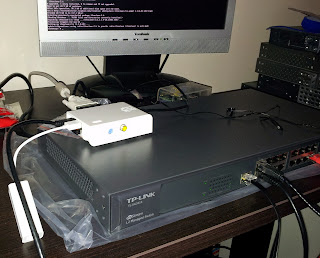Growing Up PAL
Without wishing to make too much of what is very much a first world problem, it was a bit of a miserable experience growing up as a fan of JPRGs in Australia (end elsewhere in PAL territories).
Limited local releases
It wasn’t that we missed out on obscure or fringe titles either - the “big hitters” of the genre, Final Fantasy and Dragon Quest were completely absent from shelves. The very first Final Fantasy to see a PAL release was VII on the PlayStation. Dragon Quest took even longer - the PlayStation2’s Dragon Quest VIII was the initial appearance for the series (the number was even dropped from the title, something that also occurred with the EU/AU/NZ Nintendo DS releases of Dragon Quest IV, V and VI. Presumably this was done to prevent any confusion but I like to imagine marketers saying “what other Dragon Quest games?” while whistling innocently.
Interestingly, some titles did still slip through the cracks. Lufia II [SNES] appeared as simply “Lufia” (the first game, which comes second chronologically, never made an appearance). Suikoden [PlayStation] was the very first JRPG I played, rented from a video store (remember those?) on a whim. It’s still one of my favourites and is largely responsible for getting me into the “scene” (?).
What about imports?
With such scarcity of local releases, this meant importing was the only way to obtain most of the titles. Of course, this was before Amazon, VideoGamesPlus, Play-Asia, and the like, so I remember nervously ordering Lunar 2 [PlayStation] from a small online game store that was willing to ship internationally and crossing my fingers that they were legit. Thankfully, they were, and I still have that gorgeous boxed collection on my shelf.
Apart from the issue of actually getting the game in your hands was problem of region locking. The SNES used a lockout chip AND the cartridges were a slightly different shape (PAL used the same slightly rounded shape as the Super Famicom, while the US cartridges had squared corners. Getting around this involved an adapter to, firstly, make the cart fit and, secondly, defeat the lockout. This was done by having a second cartridge slot on the adapter, into which was placed a local game. This game was presented to the lockout chip, passing the region test.
On the CD-based consoles like the PlayStation and Saturn, there were a few workarounds. A common one was a mod chip soldered onto the motherboard that defeated the region lock. Another was the “swap-trick” for PlayStation, whereby a local game was started with the lid open (lid sensor depressed to fool the system into thinking it was shut) and swapping the import game at just the right time - after the region test but before the game itself started booting.
There were also universal adapters of various types - one for the Saturn that sat in the cartridge slot (normally used for the Memory card or for RAM expansions) or boot CDs for Dreamcast and Gamecube that function like a more elegant version of the swap trick. The tool would boot, get past the region lock, then load to a menu which prompted the user to swap the disc.
Good things come to those who wait
Eventually, the PAL markets started to see local releases of most of these missing titles, in the form of re-makes for the PlayStation and then the GBA, DS, and PSP and also via backwards compatibility (e.g., PlayStation titles released via the PSN store - playing the North American version of a game on an Australian console merely required setting up a US PSN account).
Some of the bigger titles kicked off this wave during the PlayStation years, with games such as Chrono Trigger and Final Fantasy IV, V and VI making an appearance via collections. Eventually all of the series was locally available in some form. The Dragon Quest series was a similar story, with the earliest titles appearing as GBA re-makes, while IV, V and VI appeared on the DS. Only VII (PlayStation) was still waiting on a physical release - which finally eventuated in the form of the 3DS port.
By the end of it all, the number of versions of some games was almost overwhelming. Take Final Fantasy IV, which now appeared on the PlayStation, GameBoy Advance, NintendoDS, PSP, Mobile, and Windows.
The Present
Of course now, with the advent of a variety of emulators along with a nostalgia driven boom in re-releases, re-makes, and re-masters, most of these titles are more accessible than ever. In fact we are spoiled for choice in some cases - choose a platform, choose a version, choose an emulator, choose a translation (professional or fan, re-translation, re-localization or re-write), choose one or more mods.
Even after settling on a version of a game, then an emulator, there are things like scaling, filtering, and shaders to consider. Go for the authentic look or try to make it look more modern? Then come any patches or hacks put together by fans - some longstanding bugs have been fixed by committed folks while other groups have added new content or characters.





Comments
Post a Comment